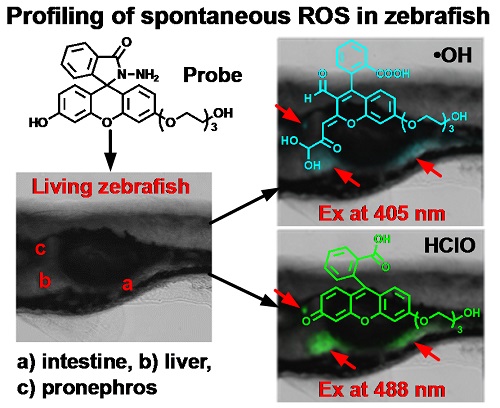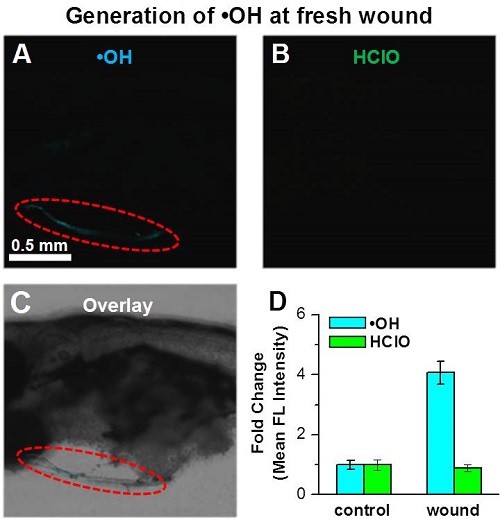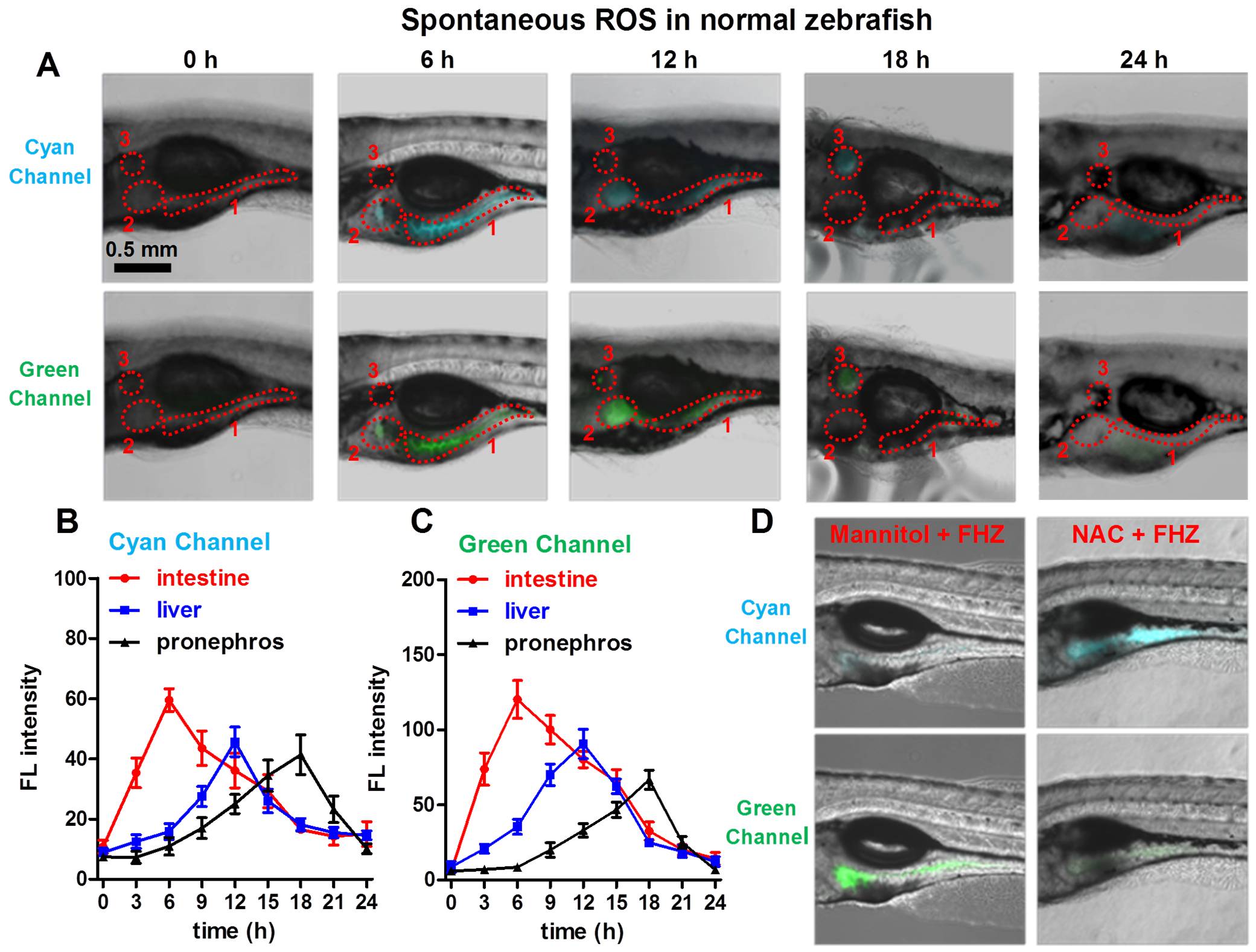Reactive oxygen species (ROS) are mostly produced in the cellular mitochondria of various organs and tissues of living organisms via the incomplete reduction of molecular oxygen, which is greatly intensified under external stimulations and injuries.
On one hand, the highly active ROS play a key role in cell signaling, homeostasis, energy production and defense mechanism against infection to regulate a wide range of biological or pathological functions. On the other hand, the excessive generation of ROS may also cause cell aging, DNA/protein mutations and various diseases.
A study team led by Prof. ZHANG Zhongping in Institute of Intelligent Machines (IIM), Hefei Institutes of Physical Science (CAHIPS), made a significant progress by developing a single fluorescent probe to achieve effective discrimination and profiling of hydroxyl radicals (·OH) and hypochlorous acid (HClO) in living organisms. The paper entitled Real-Time Discrimination and Versatile Profiling of Spontaneous Reactive Oxygen Species in Living Organisms with a Single Fluorescent Probe was published in the Journal American Chemical Society.
In this work, the study team reconstructed fluorescein through chemically grafting an additional five-membered heterocyclic ring and a lateral triethyleneglycol chain, which not only turned off the fluorescence of fluorescein, but also created the dual reactive sites to ROS and the penetration capability in passing through various biological barriers. The reactions of probe with ·OH and HClO simultaneously resulted in cyan and green emissions, respectively, which provided real-time discrimination and quantitative analysis of the two ROS in cellular mitochondria.
Surprisingly, researchers observed the accumulation of probes in the intestine and liver of a normal-state zebrafish. And the transfer pathway from intestine-to- blood-to-organ-to-kidney-to-excretion clearly presented the profiling of spontaneous ·OH and HClO in these metabolic organs. For the first time, the visualized observation of the stress generation of ·OH at the fresh wound of zebrafish is realized, in spite of its extremely short lifetime.
It is expected that the versatile probe will be a powerful tool in the investigations of ROS in living systems.

A single Fluorescent Probe with dual reactive sites to ROS. (Image by ZHANG Ruilong)

Visualization of ·OH released from the fresh wound of zebrafish. (Image by ZHANG Ruilong)

Visualizations of spontaneous ROS in normal zebrafish embryos. (Image by ZHANG Ruilong)
Contact:
ZHANG Zhongping
CAS Center for Excellence in Nanoscience,Institute of Intelligent Machines, Hefei Institutes of Physical Science
Hefei, Anhui 230031, China.
Tel.: +86-551-65591156
fax: +86-551-65591156
E-mail: zpzhang@iim.ac.cn